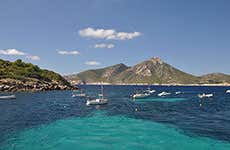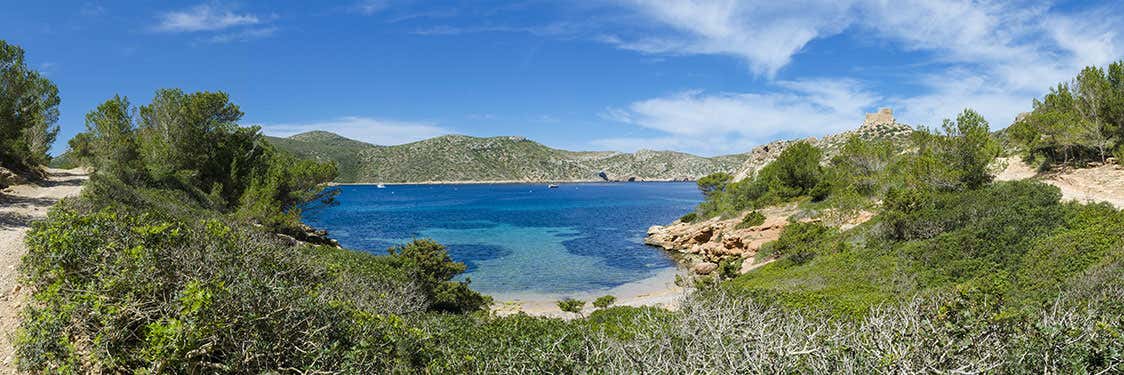
Cabrera
Named after the mountain goats that once roamed its shores, Cabrera is an uninhabited island in the southern part of Mallorca, where history and nature come together in their most pristine form.
Comprising 18 islands and islets, the Cabrera Archipelago lies 15 kilometres (9.3 miles) south of Mallorca. Its landscapes are home to over 450 botanical species and around 200 types of fish, all thriving in its pristine seabed. The archipelago also serves as a key stopover for more than 150 species of migratory birds.
Looking Back
With the onset of the War of Independence in 1808, many French prisoners were transported to the island of Cabrera. After enduring a long, arduous journey marked by overcrowding and storms, those who survived the rampant diseases finally arrived at their new home.
Although there was no formal prison, the entire island effectively became one. Food supplies arrived sporadically from Mallorca until, after an attempted hijacking by the prisoners, the suppliers refused to return.
Months passed without food supplies being restored, and life on the island became a living nightmare. The prisoners survived on plants, some of which were poisonous, and it's even believed that cannibalism may have been practised in their desperate struggle for survival.
In 1814 peace was signed and the few prisoners who managed to survive were released.
At this time, the island came under military control, although the land was leased for agricultural use.
The military presence remained on the island for as long as anyone could remember, lasting until 1999. Used as a training ground for manoeuvres and target practice, Cabrera remained virtually untouched and uninhabited, avoiding real estate speculation. In 1991, it was declared a National Maritime and Terrestrial Park.
What to Do in Cabrera
Shrouded in numerous legends and steeped in historical significance, Cabrera is a peaceful haven—a pristine space that remains virtually untouched, ready to reveal itself to the eager eyes of its visitors.
On the island, you’ll find small, nearly deserted beaches and a natural environment that invites exploration. Here are just a few of the sights you can discover if you choose to visit Cabrera:
Cabrera Castle
Perched high above the island like a vigilant sentinel, the castle is one of Cabrera’s main attractions. Always in sight, its imposing structure grows larger as you approach the port. This fortification is a key part of Mallorca’s history and offers breathtaking panoramic views.
Cabrera Museum
The Cabrera Museum provides a comprehensive overview of the island, showcasing its evolution throughout history. In the botanical garden, you'll find a curated selection of the island's unique plant species.
Blue Cave
With its clear backdrop, crystal-clear waters, and a light that gives it a dreamlike quality, the Blue Cave of Cabrera is truly a magical place—especially in the late afternoon, when the sun’s rays filter through its small entrance, filling the cave with a stunning glow. If you’re brave enough to snorkel, you’ll have an unforgettable experience.
To fully embrace the island's "wild" character, in the true Robinson Crusoe style, many visitors choose to bring their own food. However, there is also a small canteen where you can grab some snacks.
How to Get to Cabrera
As is to be expected for an island, the only way to reach Cabrera from Mallorca is by boat. The nearest port, and the one from which most boats depart, is Colonia de Sant Jordi.
The journey time varies depending on the type of boat used for the excursion, but, as with most important things in life, the key is to enjoy the trip. The journey itself offers a chance to see Mallorca from the distance of the sea, as well as to admire the stunning landscape of the Cabrera Archipelago, with its unique islands.
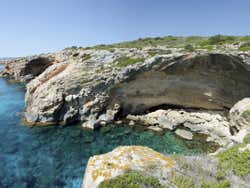
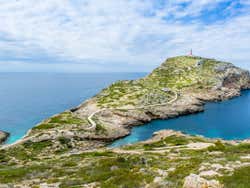
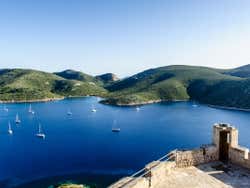
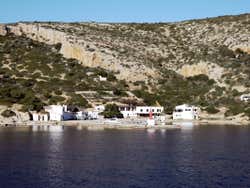
Nearby places
Platja des Trenc (23.9 km) Cala Pi (26.4 km) Capocorb Vell (30.5 km) Llucmajor (39.3 km) Platja de s'Arenal (46 km)

